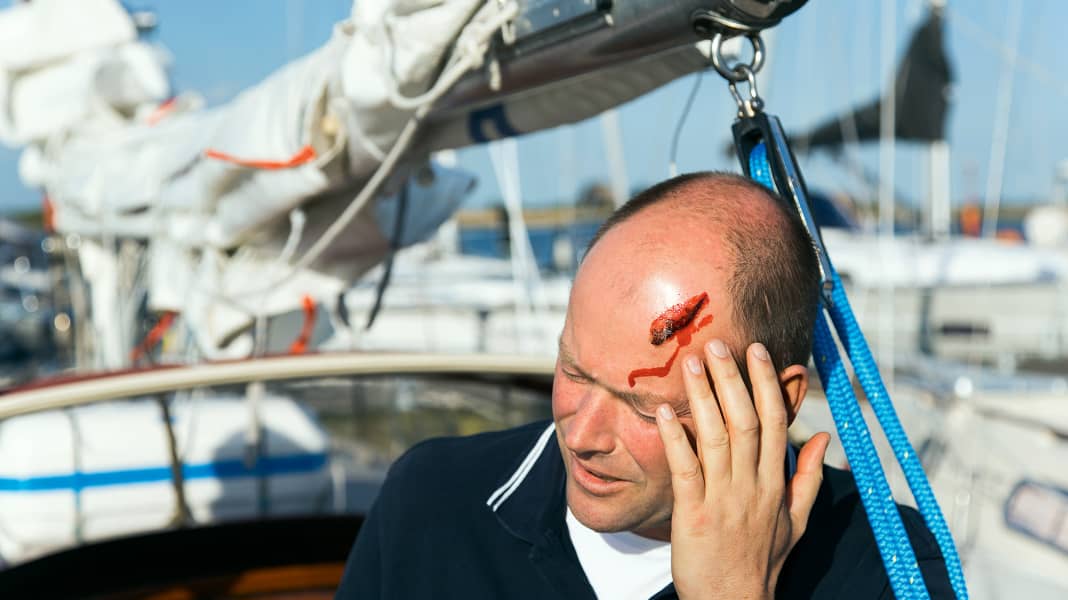
Don't be fooled by the pictures in this article - fortunately, things rarely get this bloody on board. Accidents like the one just described by Rosalin Kuiper, who suffered a laceration and a concussion on board Boris Herrmann's "Malizia" or that of the Swiss man who lost the tip of his little fingerare rare even in such tough regattas.
Sailing is a safe sport, especially when it comes to serious injuries or even fatal accidents: there are only around two or three of these in Germany every year. Nevertheless, sailing is not completely harmless. Minor injuries in particular occur time and again. Who hasn't slipped when jumping off the pulpit or knows someone who has been injured or fallen into the water?
Do not underestimate minor injuries
What's more, even minor wounds can have far-reaching consequences, which means that spoiling your holiday is often the least of your worries. If not properly treated, they can lead to all kinds of complications, such as inflammation or nerve damage. It is therefore best to be aware of the possible risks on board and to minimise them so that an injury does not occur in the first place.
We have summarised the 15 most common sources of injury in this article. As a preventative measure, it is often enough to wear shoes or gloves and, above all, to be aware of the danger and be prepared accordingly. This also includes being aware, for example when mooring, that damage to the boat is easier to repair than a broken bone. The selected injuries are also those for which the crew can provide good first aid. This is explained step by step in collaboration with Dr Philipp Stalling, a doctor from Seadoc.
When outside help is useful for injuries
The aim of any treatment should always be to alleviate pain and prevent further aggravation. The methods shown refer to the coastal sailing area, where it has been assumed that professional medical care can be reached within a few hours in the nearest harbour. For all more serious injuries, medical advice should always be sought by radio, as well as in the event of severe pain or if the crew is unsure. Such cases also include fainting.
In case you wince at the sight of the pictures: The author is fine - the red is theatre blood.
Treating bone fractures





Broken bones can be treated temporarily on board using the PECH programme:
P - Break
Immobilise the affected body part, usually the ankle or wrist, and stabilise if necessary. Special positioning splints such as the splint splint shown here are ideal, but slats, boards, towel rolls or similar can also be used. However, they are always much less comfortable. For arm and rib injuries, the use of a triangular sheet is recommended. Position corrections - known as repositioning - should only be carried out by a specialist on land.
E - Ice
Cooling is the most important thing, the sooner after the accident, the better. Self-cooling bags are very suitable for this, as are beer cans from the fridge or other cold objects. But don't overdo it, otherwise cooling damage can occur. Therefore, place a cloth between the cooling pad and the skin, kitchen roll will do.
C - Compression
Wrap the injury with elastic bandages, not too tightly, but in such a way that pressure can be felt.
H - elevation
Then keep the affected part of the body elevated. Both should minimise swelling of the tissue.
Relieve pain

Tablets help: A supply of painkillers should be on board. In the case of lumbago, they help to loosen up the cramped muscles. For other injuries, they should be taken to prevent postural rest and subsequent muscle hardening.
Sprains and bruises
Bumps, bruises and overstretched joints are by far the most common injuries. They are easy to treat, but above all they need to be cooled. Cooling is intended to prevent swelling, which usually means pain and functional impairment. Once the swelling is there, cooling is no longer of any use.
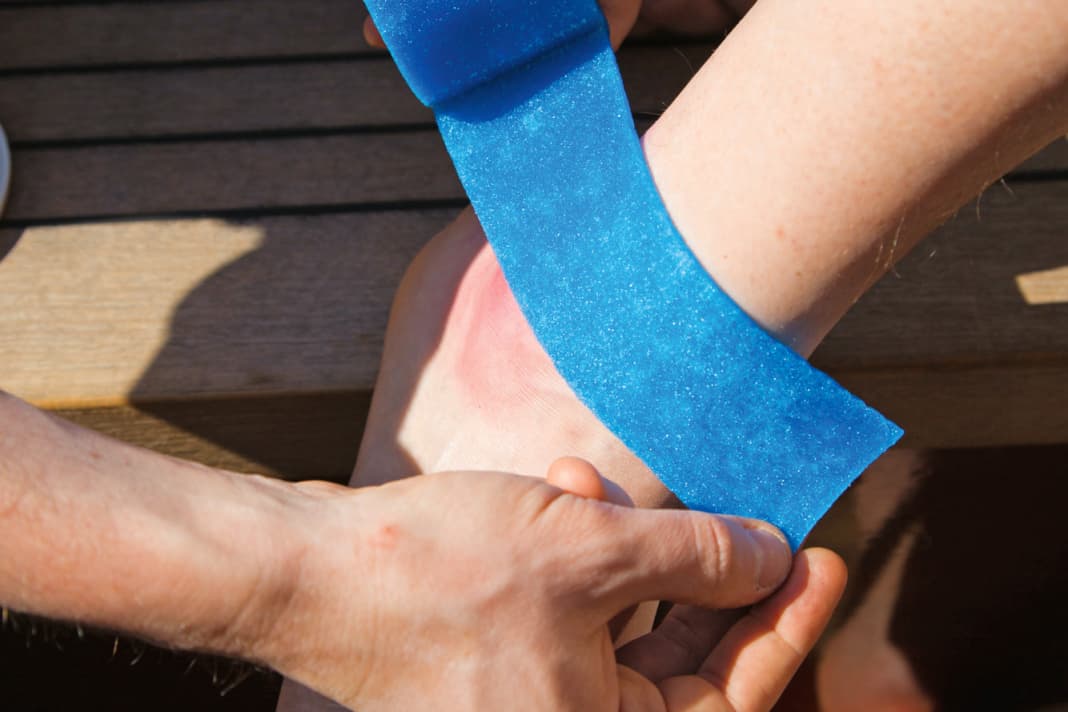





Burns
Whether it's a sheet of sail or boiling water from the kettle - brief moments of carelessness usually leave those affected with burns for weeks. With the right first aid, pain can be alleviated and infections avoided. There is a high risk of infection with burns. They should therefore be treated with care.
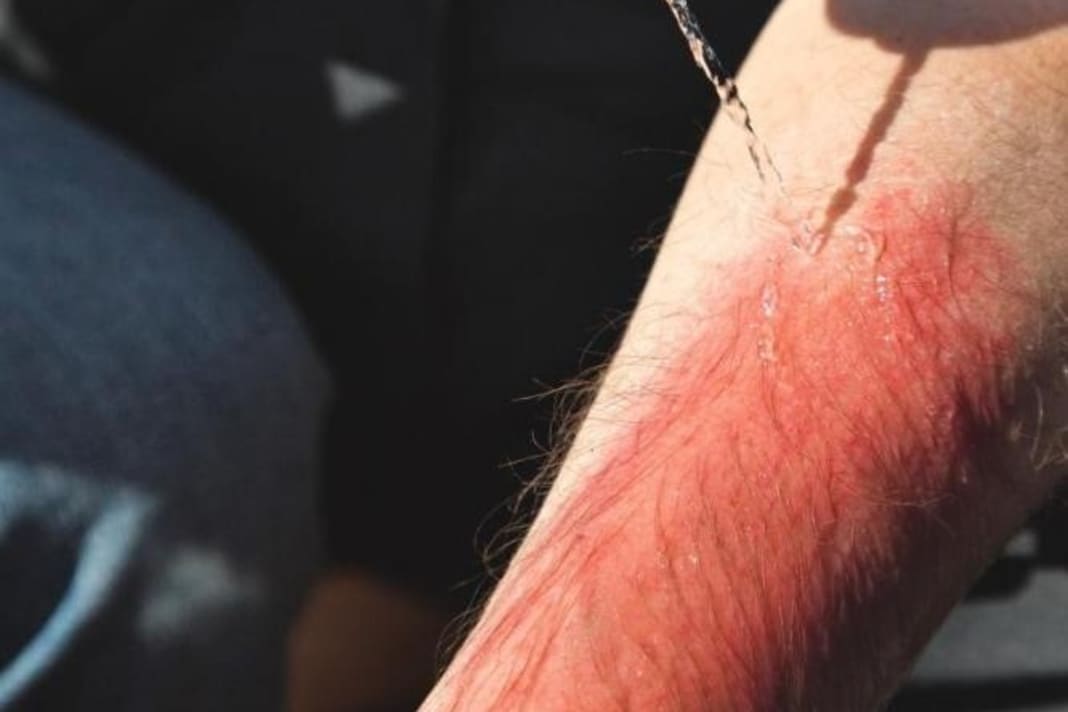





Minor cuts
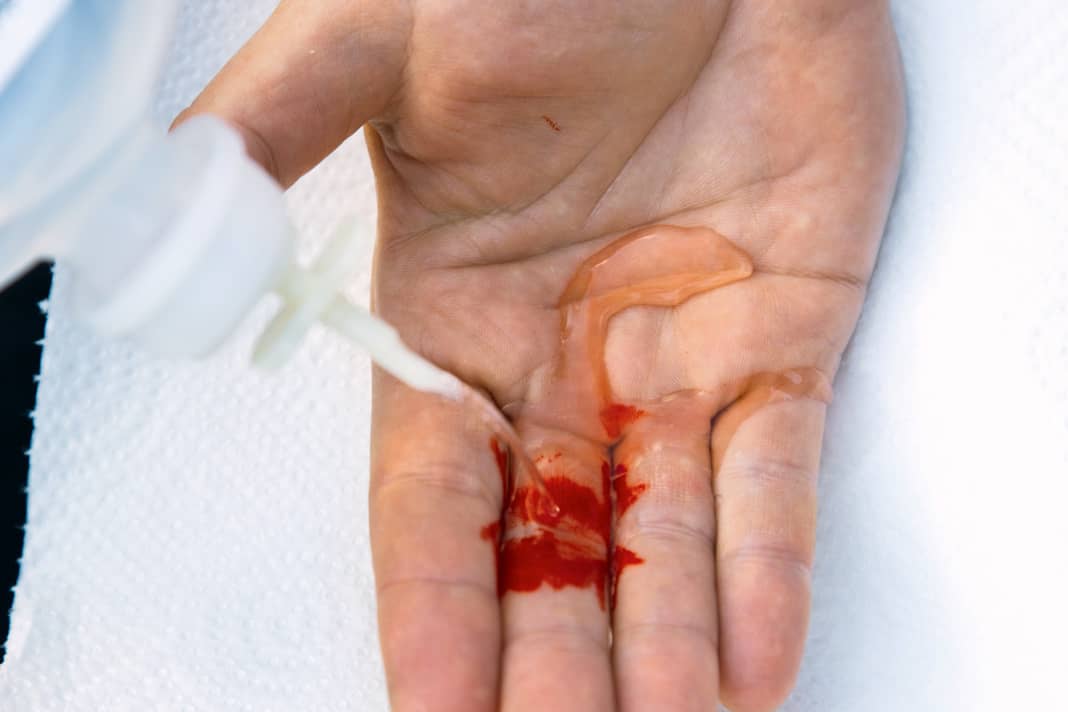





Deep cuts
Even small cuts can quickly look frightening if there is a lot of blood loss. They are also usually extremely painful and sometimes (as here on the sole of the foot) can be a real disability for the person affected. With our series of pictures, you can at least provide first aid, disinfect the wound and stop the bleeding. You should then have the wound thoroughly cleaned and larger wounds treated by a doctor on land.
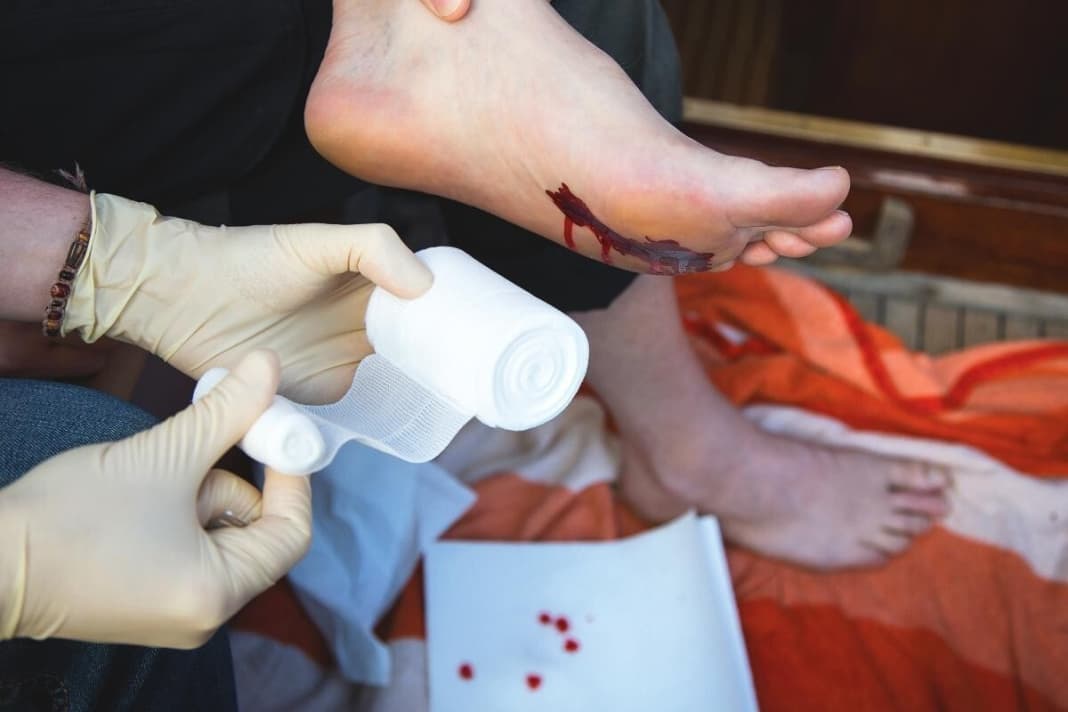





Head wounds
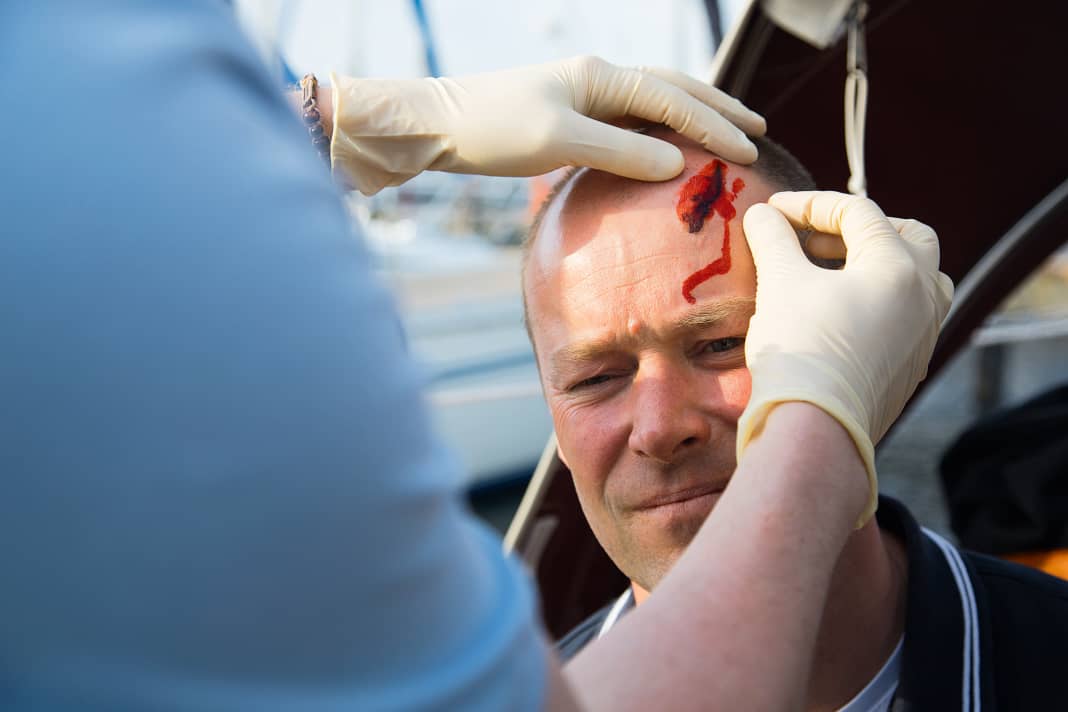




Avoid injuries
Even small measures can minimise many risks on board a sailing yacht. We will show you how to avoid injuries while sailing!







